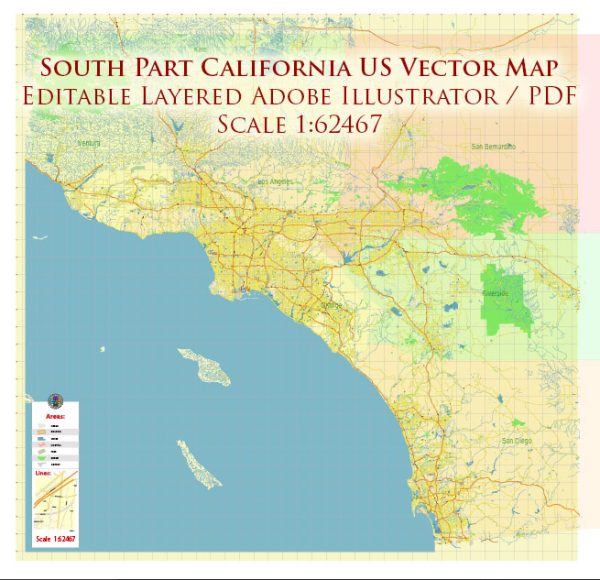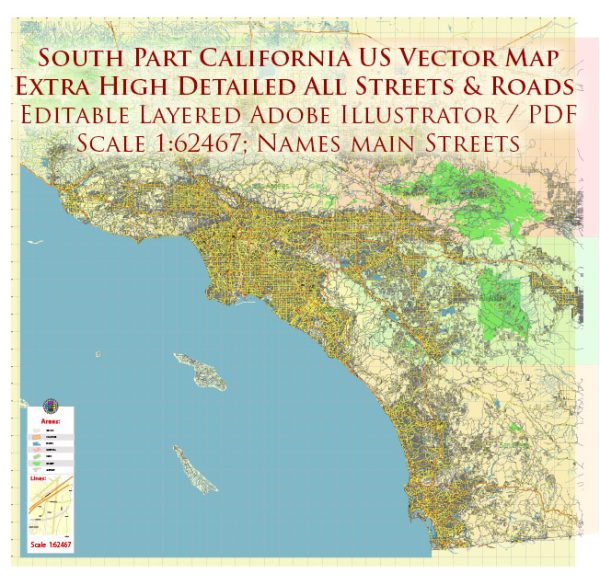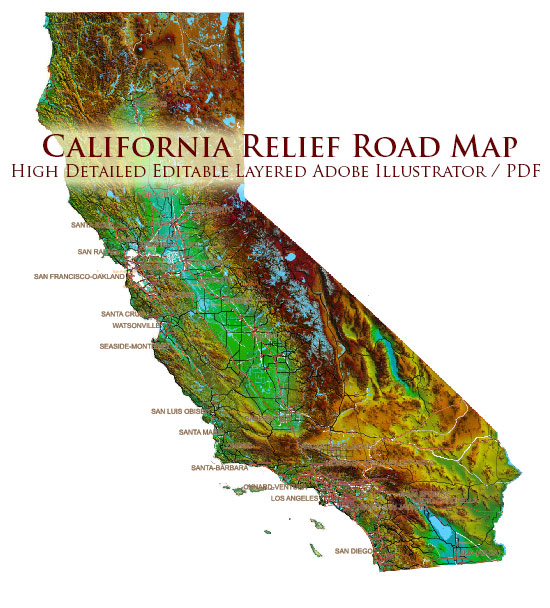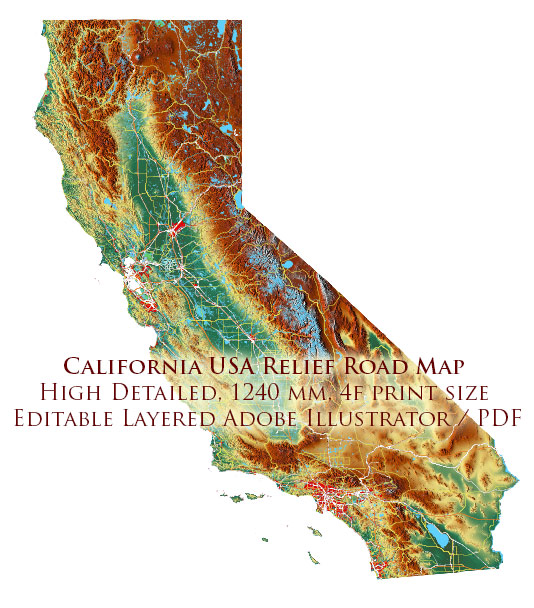Sacramento, California, US, printable vector map street City Plan V.3.08.2016 full editable, Adobe Illustrator, full vector, scalable, editable text format street names, 13 mb ZIP
All streets, Some more buildings. Map for design, printing, arts, projects, presentations, for architects, designers and builders, business, logistics.
The most exact and detailed map of the city.
DWG, DXF, CDR and other formats – on request, same price, please, contact
Sacramento, California, USA.
This vector map of Sacramento is used as a basis for design, editing, and further printing.
This is the most detailed, exact map of Sacramento for high-quality printing and polygraphy. You can always clarify the map development date by contacting us.
For your convenience, all objects on Sacramento vector map are divided into layers. And the editing is very easy – colors, lines, etc.
You can easily add any objects needed (e.g. shops, salons, sale points, gas station or attraction) on any layer of Sacramento vector map.
Sacramento is the capital city of the U.S. state of California and the seat of Sacramento County. Located at the confluence of the Sacramento River and the American River in Northern California’s Sacramento Valley, Sacramento’s estimated 2018 population of 501,334 makes it the sixth-largest city in California and the 9th largest capital in the United States. Sacramento is the seat of the California Assembly, the Governor of California, and Supreme Court of California, making it the state’s political center and a hub for lobbying and think tanks. Sacramento is also the cultural and economic core of the Sacramento metropolitan area, which had 2010 population of 2,414,783, making it the fifth largest in California.
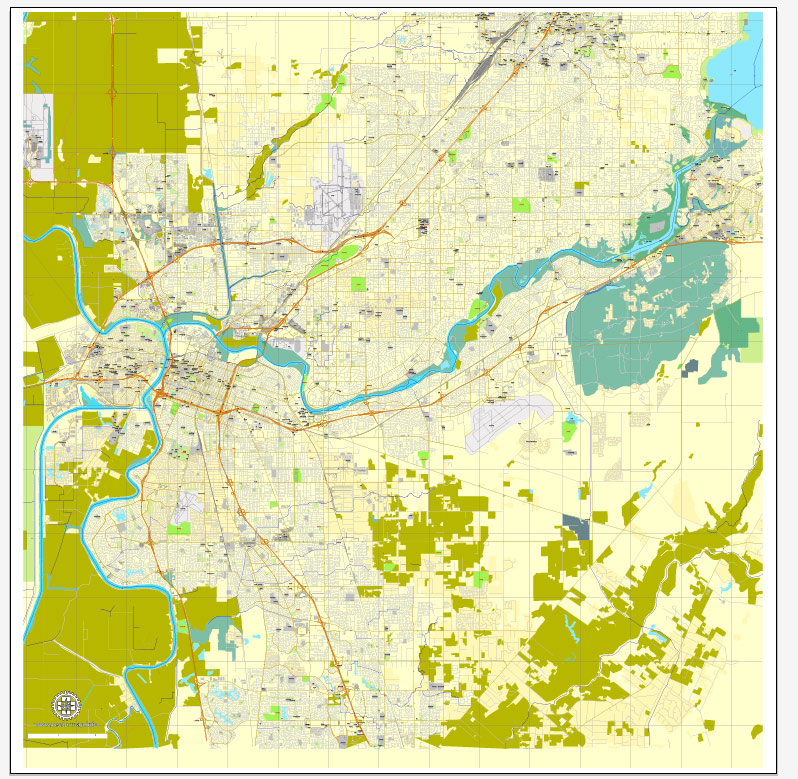
One of the advantages of Sacramento vector maps of our production is the relevance of cartographic data, we constantly update all our products.
This vector map of Sacramento is used by:
designers, layout designers, printers, advertisers and architects. Our product – vector maps – is designed for further editing and printing in large formats – from @Wall format (a few meters) to A-0 and A-1, A-2, A-3.
Sacramento map in vector format is used for design, urban planning, presentations and media visualizations.
Advertising and presentation map of Sacramento (usually the final designer marks the routes, and puts the client’s objects (shops, saloons, gas stations etc.)
The undoubted advantage is that people will NEVER throw out this advertising product – the map. In fact, as an advertising medium, a map is the most “long-playing” of the well-known polygraphic advertising media, with the longest lifespan, and the maximum number of interactions with the customer.
For travelers, maps are sold at the airports and gas stations around the world. Often the source is our vector maps.
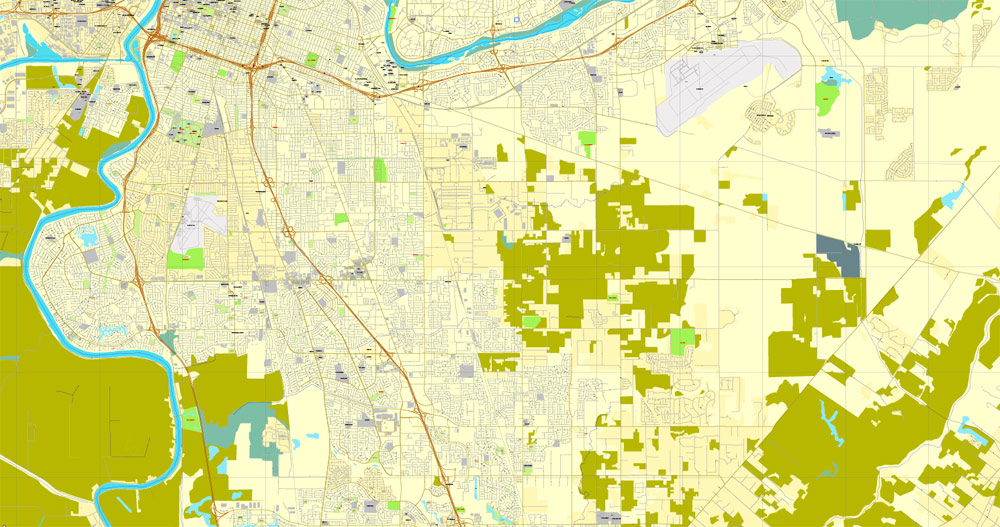
Take a look, who purchases our vector maps of Sacramento in “Our Clients and Friends” page – these are large and small companies, from super-brands like Volvo and Starbucks, to small design studios and printing houses.
It’s very easy to work with vector maps of Sacramento, even for a not very experienced designer who can turn on and off the map layers, add new objects, change the colors of fill and lines according to customer requirements.
The undoubted advantage of Sacramento vector maps in printing is an excellent and detailed visualization, when customer can expand a large paper map and instantly define his location, find a landmark, an object or address on map, unlike using the popular electronic formats of Google and Yandex maps for example.
Printable vector maps of Sacramento are much more convenient and efficient than any electronic maps on your smartphone, because ALL DETAILS are displayed in the entire space of Sacramento map.
Sacramento is the fastest-growing major city in California, owing to its status as notable financial center on the West Coast and as a major educational hub, home of Sacramento State University and University of California, Davis. Similarly, Sacramento is a major center for the California healthcare industry, as the seat of Sutter Health, the world-renowned UC Davis Medical Center, and the UC Davis School of Medicine, and notable tourist destination in California, as the site of The California Museum, the Crocker Art Museum, California Hall of Fame, the California State Capitol Museum, and the Old Sacramento State Historic Park. Sacramento is known for its evolving contemporary culture, dubbed the most “hipster city” in California. In 2002, the Harvard University Civil Rights Project conducted for Time magazine named Sacramento “America’s Most Diverse City”.
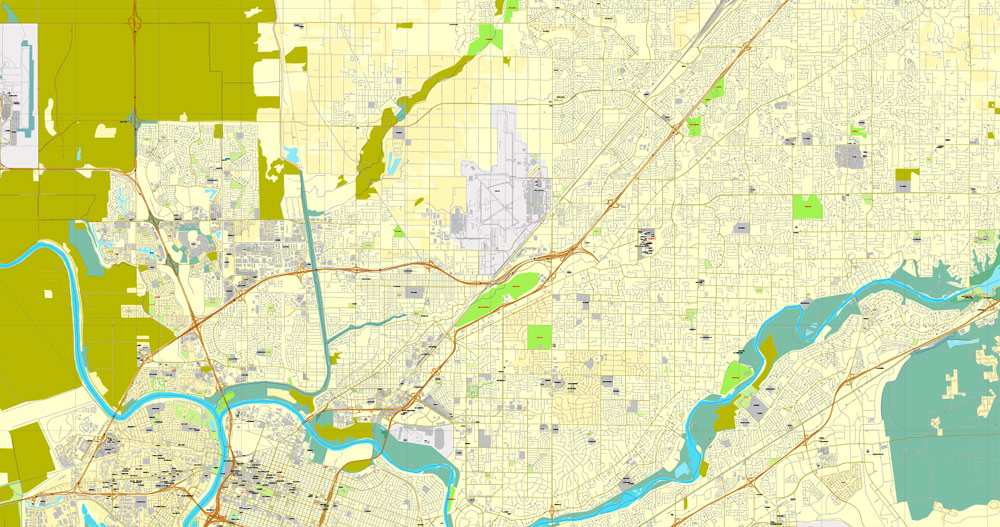
Useful tips on working with vector maps of cities and countries in Adobe Illustrator.
«V» – launches the Selection tool (cursor, black arrow), which makes active any vector line.
«А» – launches the Direct Selection tool (white cursor), allows you to select curve elements and drag them to the desired place.
«R» – activates the Rotate tool, which helps you rotating selected objects around the center point by 360 degrees.
«E» – gives you the opportunity to use the Eraser tool and erase unnecessary parts.
«X» – switches between Fill and Stroke in the Tools section. Try to get used to this hot key and
you will quickly understand that you can’t live and work without it.
Guides are not limited to vertical and horizontal in Adobe Illustrator. You can also create a diagonal guide for example. Moreover, you can turn any contours into guides. Select the outline and go to View > Guides > Make Guides (Create Guides), or simply press Cmd/Ctrl + 5. You can also turn the guides back into an editable object. Go to menu, View > Guides > Unlock Guides (Release Guides), select the guide you want to edit and select View > Guides > Release Guides (Reset Guides), or just press Cmd/Ctrl + Option / Alt + 5).
You will probably want to change the color scheme used on our Sacramento vector map.
To quickly and effectively play with colors.
Of course, you can do it manually, all objects in our Sacramento vector map are divided according to types and layers, and you can easily change the color gamma of vector objects in groups and layers.
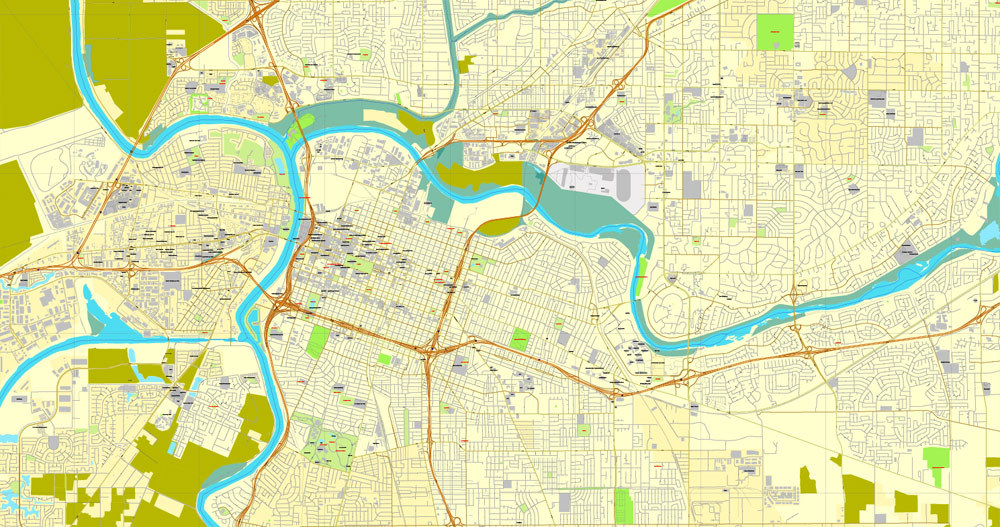
Note. This color editing method is convenient for global color adjustment in a vector map, if global colors were not used when creating a Map of Sacramento.
The «Edit colors» button or «Edit or apply colors» on the «Color Catalog» palette
Click this button if you need to edit colors on the «Color Catalog» palette or edit and then apply them to the selected Vector Map of Sacramento or its fragment.
The «Edit color group» button or «Edit or apply color group» on the «Samples» palette.
Click this button if you need to edit the colors in the specific color group or edit and apply them to the selected Vector Map of Sacramento or a group of its elements, for example, the whole layer “Streets and lines”. You can also double-click the color group in the Samples panel to open the dialog box.
If the map file is too large and your computer freezes or even can’t open it quickly:
1. Try to reduce the color resolution of the video card (display) to 256 colors while working with a large map.
2. Using Windows Task Manager, select all the application you don’t need, while working with map, just turn them off.
3. Launch Adobe Illustrator. (DO NOT OPEN the vector map file)
4. Start the Windows Task Manager using administrator rights > Find the “Illustrator” process > set the «real time» priority,
5. Open the file. When you see the LEGACY FONT popup window – click “OK” (do not update). You can restore the TEXT later.
6. Can also be useful: When file is opened – Edit > Settings > Basic Settings > disable smoothing. /// It looks scary, but works quickly)))
We recommend saving the file in Adobe Illustrator 10 version. It’s much more stable when working with VERY BIG size files.
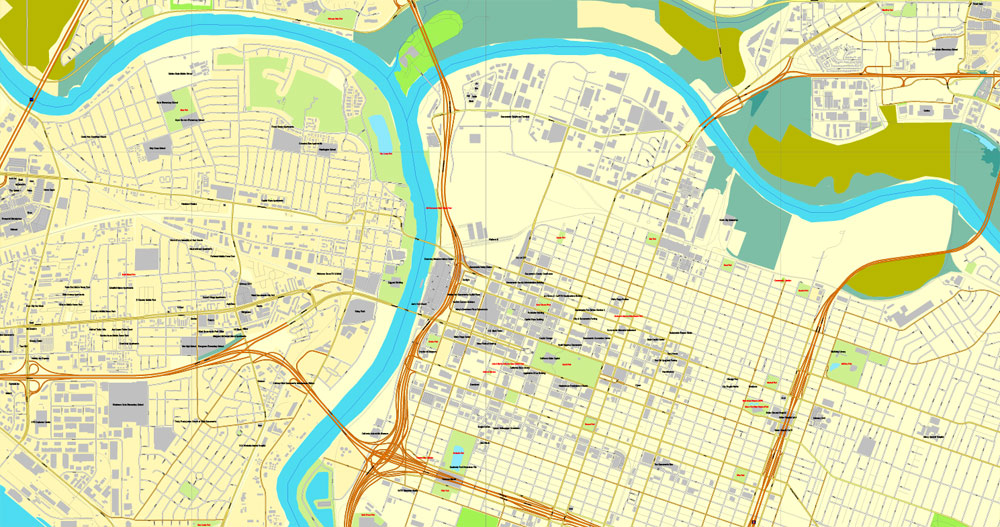
Create and edit color groups of Sacramento vector map, and also assign colors using the «Edit Colors»/ а «Repaint Graphic Object» dialog box.
A. Creating and editing of a color group on the «Edit» tab
B. Assigning colors on the «Assign» tab
C. Select a group of colors from the «Color groups» list
The option «Repaint a graphic object» in the lower part of the dialog box allows you to preview the colors on a selected layer of Vector map, or a group of elements, and specify whether its colors will be redefined when the dialog box is closed.
The main areas of the dialog box are:
«Edit»
The «Edit» tab is designed to create a new or edit the existing color groups.
The harmony rules Menu and the Color Wheel are used to conduct experiments with color harmonies. The color wheel shows how colors are related in color harmony, and the color bars allow you to view and manipulate an individual color values. In addition, you can adjust the brightness, add and remove colors, save color groups and view colors on the selected Vector Map of Sacramento or a separated layers.
«Assign»
The «Assign» tab is used to view and control on how the original colors are replaced with colors from the color group like your corporate colors in the Vector Map of Sacramento.
The assign color ability is provided only if the entire map, layer or fragment is selected in the document. You can specify which of new colors replace the current colors, whether the spot colors should be preserved and how colors are replaced (for example, you can replace colors completely or changing the color tone while maintaining the brightness). The «Assign» tab allows you to redefine colors in the Vector Map of Sacramento, or in separate layers and fragments using the current color group or reducing the number of colors in the current Vector Map.
Color groups
Is a list of all saved color groups for current document (the same groups appear in the «Samples» palette). You can edit and delete the existing color groups, as well as creating a new ones using the list of “Color Groups” in the dialog box. All changes appear in the «Samples» palette.
The highlighted color group shows, which color group is currently edited.
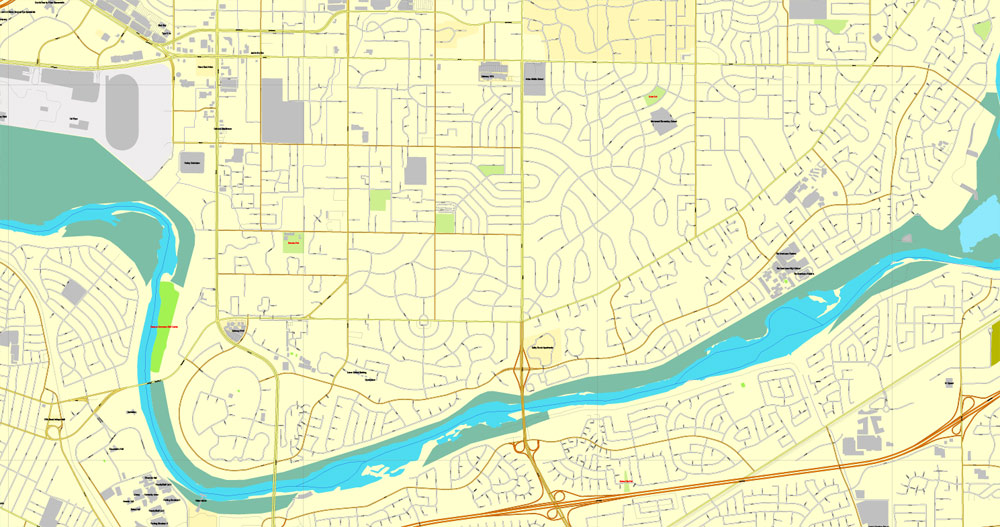
Before the arrival of the Spanish, the area was inhabited by the Nisenan people indigenous peoples of California. Spanish cavalryman Gabriel Moraga named surveyed and named the Rio del Santísimo Sacramento (Sacramento River) in 1808, after the Blessed Sacrament, referring to the Eucharist in the Catholic Church. In 1839, Juan Bautista Alvarado, Mexican governor of Alta California granted the responsibility of colonizing the Sacramento Valley to Swiss-born, Mexican citizen John Augustus Sutter, who subsequently established Sutter’s Fort and the settlement at the Rancho Nueva Helvetia. Following the American Conquest of California and the 1848 Treaty of Guadalupe-Hidalgo, the waterfront developed by Sutter began to be developed and incorporated in 1850 as the City of Sacramento. As a result of the California Gold Rush, Sacramento became a major commercial center and distribution point for Northern California, serving as the terminus for the Pony Express and the First Transcontinental Railroad.
Geography
According to the United States Census Bureau, the city covers an area of 100.1 square miles (259 km2), 97.81% of it land, and 2.19% of it water.
Depth to groundwater is typically about 30 feet (9 m). Much of the land to the west of the city (in Yolo County) is permanently reserved for a vast flood control basin (the Yolo Bypass), due to the city’s historical vulnerability to floods. As a result, the contiguous urban area sprawls only four miles (6 km) west of downtown (as West Sacramento, California) but 30 miles (48 km) northeast and east, into the Sierra Nevada foothills, and 10 miles (16 km) to the south into valley farmland.
The city is located at the confluence of the Sacramento River and the American River, and has a deep-water port connected to the San Francisco Bay by a channel through the Sacramento–San Joaquin River Delta. It is the shipping and rail center for the Sacramento Valley. Food processing is among the major industries in the area.
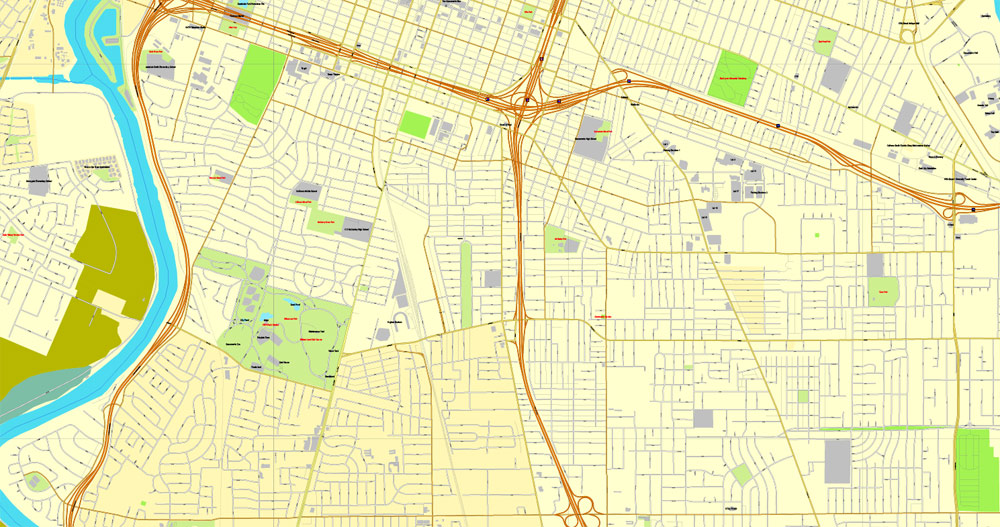
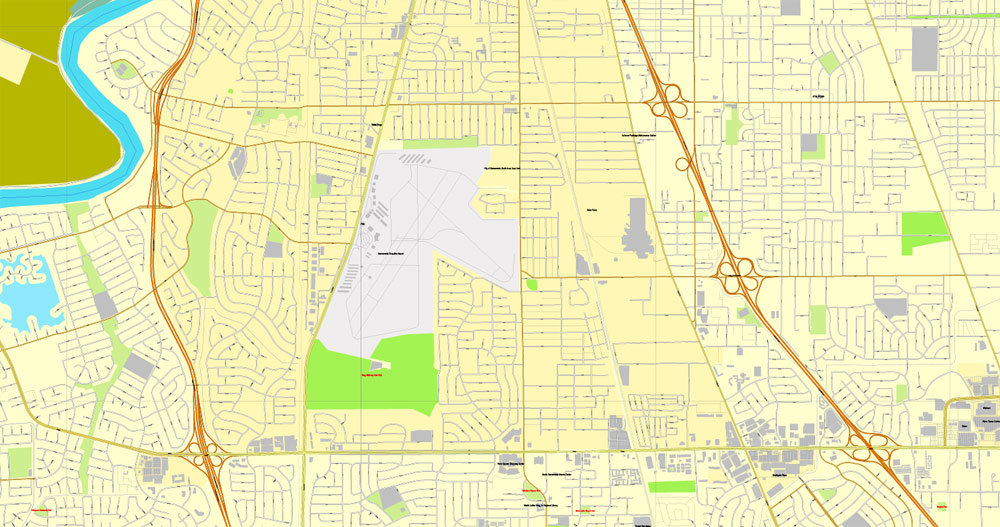
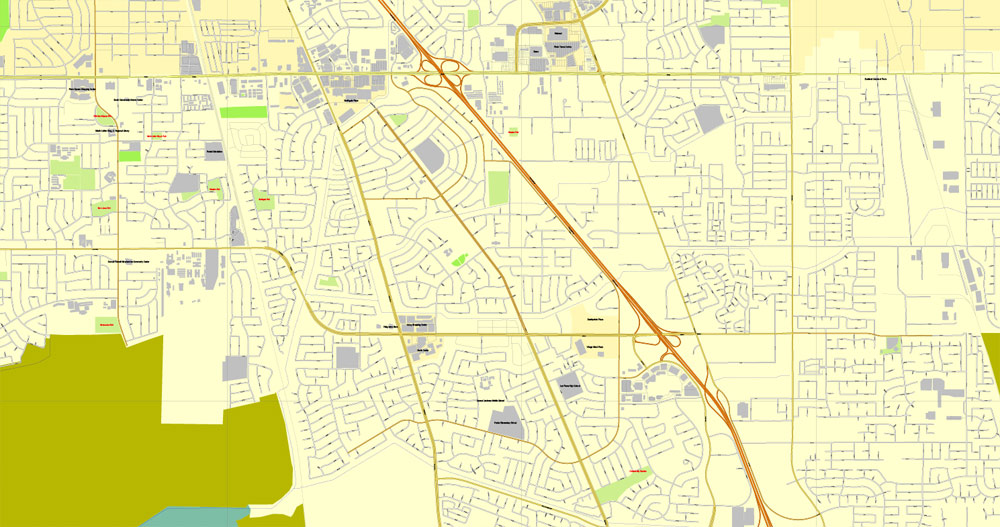
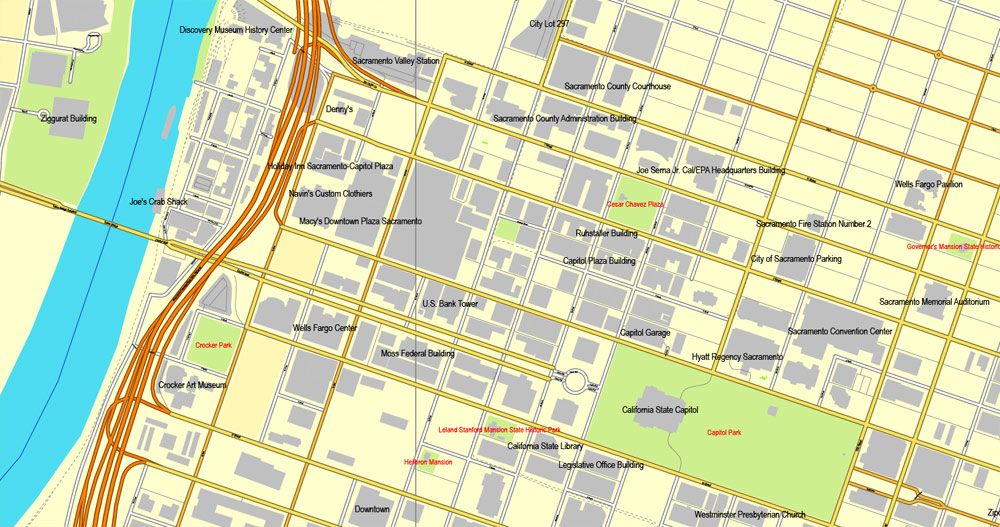
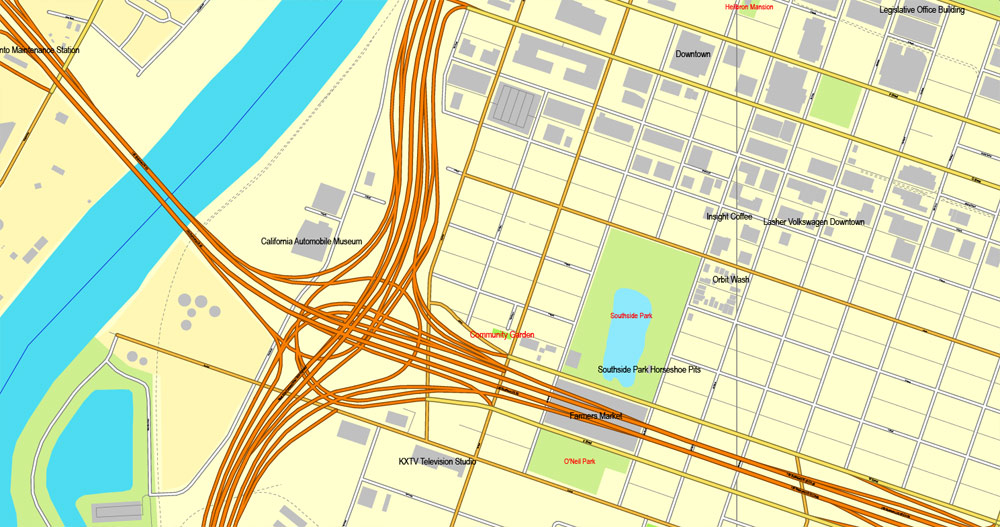
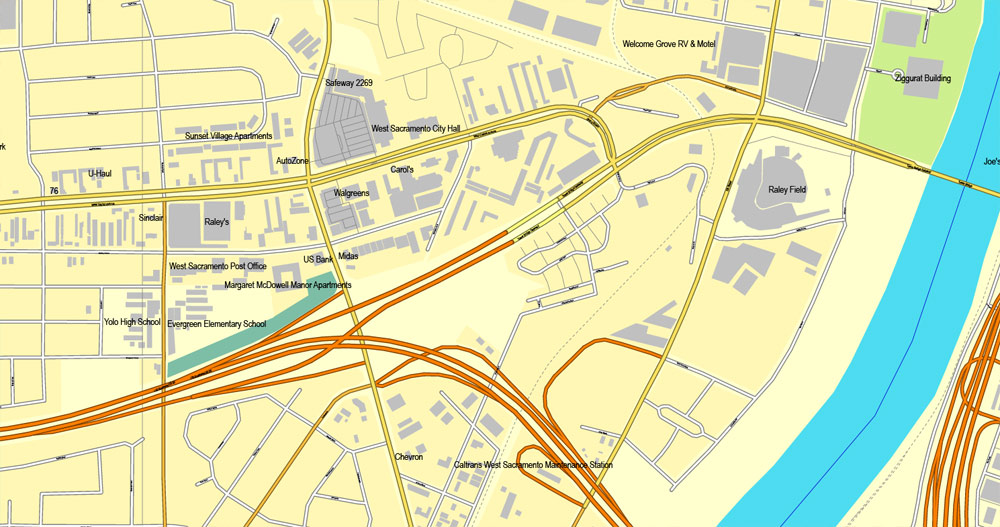
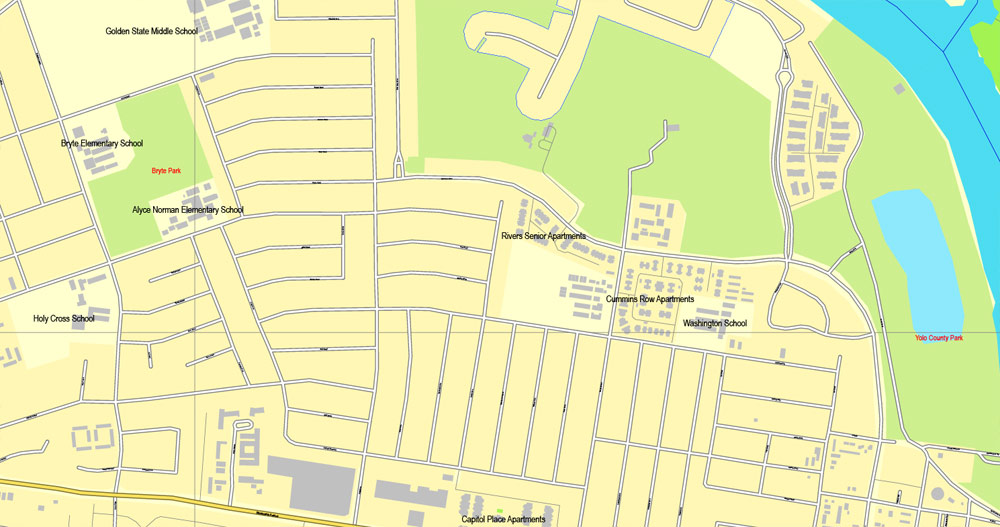
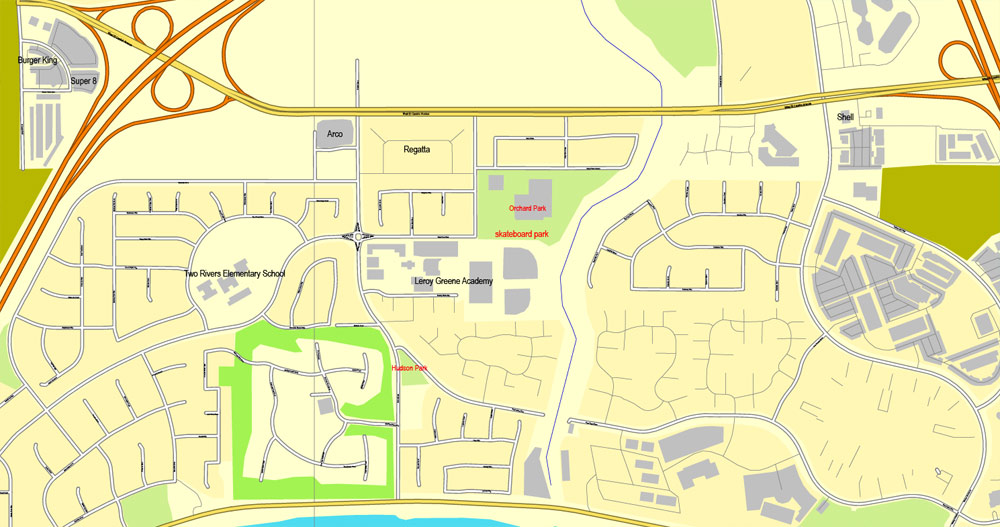
Sacramento, California
Sacramento is the capital city of the U.S. state of California and the seat of Sacramento County. It is at the confluence of the Sacramento River and the American River in the northern portion of California’s expansive Central Valley. Its estimated 2014 population of 485,199 made it the sixth-largest city in California, and the 35th largest city in the United States. Sacramento is the cultural and economic core of the Sacramento metropolitan area, which includes seven counties with a 2010 population of
2,414,783. Its metropolitan area is the fourth largest in California after the Greater Los Angeles area, the San Francisco Bay Area, and the San Diego metropolitan area,
and is the 27th largest in the United States. In 2002, the Civil Rights Project at Harvard University conducted for TIME magazine named Sacramento “America’s Most Diverse
City”.
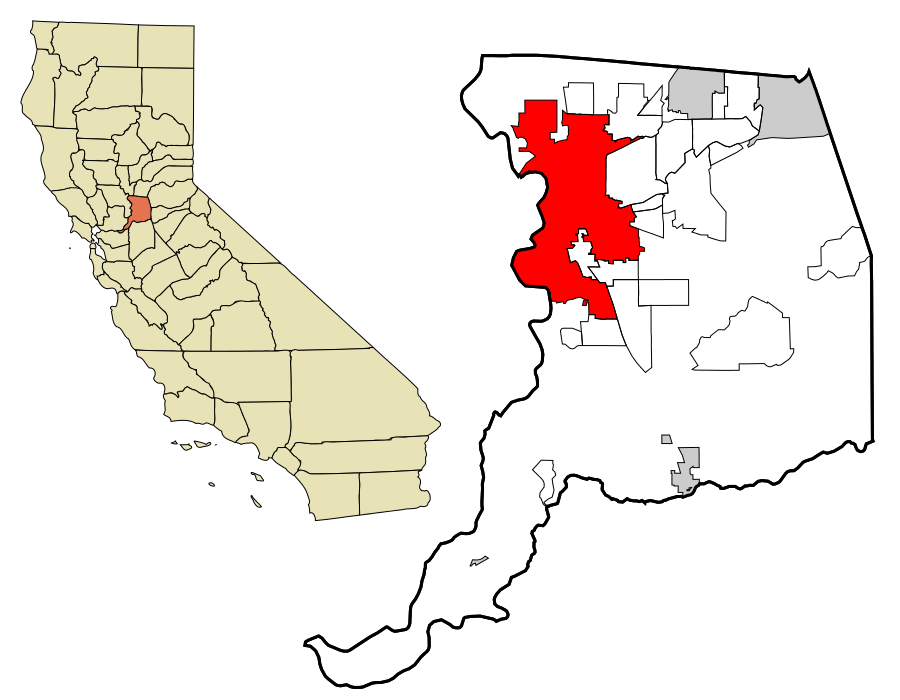
Download this Free Vector Map US Sacramento California Location >>>>>
Sacramento_County_California_Incorporated_and_Unincorporated_areas_Sacramento_Highlighted.ai
Sacramento became a city through the efforts of the Swiss immigrant John Sutter, Sr., his son John Augustus Sutter, Jr., and James W. Marshall. Sacramento grew quickly
thanks to the protection of Sutter’s Fort, which was established by Sutter in 1839. During the California Gold Rush, Sacramento was a major distribution point, a
commercial and agricultural center, and a terminus for wagon trains, stagecoaches, riverboats, the telegraph, the Pony Express, and the First Transcontinental Railroad.
The city was named after the Sacramento River, which forms its western border. The river was named by Spanish cavalry officer Gabriel Moraga for the Santisimo Sacramento (Blessed Sacrament), referring to the Catholic Eucharist.
California State University, Sacramento, more commonly known as Sacramento State or Sac State, is the largest university in the city and one of 23 campuses in the
California State University system. University of the Pacific’s Sacramento Campus is a private university with one of its three campuses in Sacramento. In addition, the
University of California, Davis, is in nearby Davis, 15 miles (24 km) west of the capital. The UC Davis Medical Center, a world-renowned research hospital, is located in
the city of Sacramento.
Area
• City 100.105 sq mi (259.273 km2)
• Land 97.915 sq mi (253.600 km2)
• Water 2.190 sq mi (5.673 km2) 2.19%
Elevation 30 ft (9 m)
Population (April 1, 2010)
• City 466,488
• Estimate (2014) 485,199
• Density 4,700/sq mi (1,800/km2)
• Urban 1,723,634
• Metro 2,149,127
• CSA 2,414,783
Demonym(s) Sacramentan
Time zone Pacific (UTC?8)
• Summer (DST) PDT (UTC?7)
ZIP codes 942xx, 958xx
Area code 916
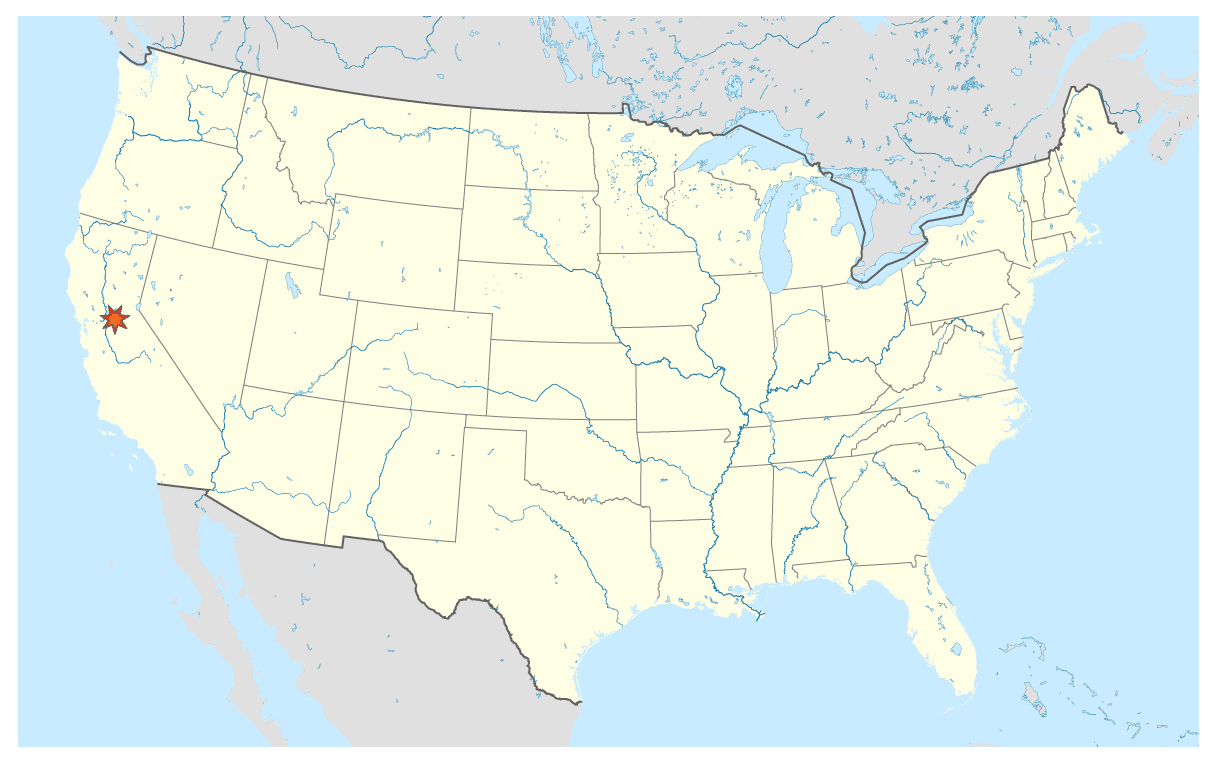
Download this Free Vector Map US Sacramento California Location >>>>>
Sacramento_Free_Vector_Map_Usa_location_map.ai
Geography
According to the United States Census Bureau, the city covers an area of 100.1 square miles (259 km2), 97.81% of it land, and 2.19% of it water.
Depth to groundwater is typically about 30 feet (9 m). Much of the land to the west of the city (in Yolo County) is permanently reserved for a vast flood control basin
(the Yolo Bypass), due to the city’s historical vulnerability to floods. As a result, the greater metropolitan area sprawls only four miles (6 km) west of downtown (as
West Sacramento, California) but 30 miles (48 km) northeast and east, into the Sierra Nevada foothills, and 10 miles (16 km) to the south into valley farmland.
The city is located at the confluence of the Sacramento River and the American River, and has a deep-water port connected to the San Francisco Bay by a channel through the
Sacramento–San Joaquin River Delta. It is the shipping and rail center for the Sacramento Valley. Food processing is among the major industries in the area.
https://en.wikipedia.org/wiki/Sacramento,_California
Free vector map World, Adobe Illustrator, download now maps vector clipart
Map for design, projects, presentation free to use as you like.
See also: TERMS & CONDITIONS: SOFTWARE LICENSE AGREEMENT FOR DIGITAL CARTOGRAPHIC DATA


















 Author: Kirill Shrayber, Ph.D.
Author: Kirill Shrayber, Ph.D.